They say that history does not necessarily repeat itself, but rather it can “rhyme.” That might be the most apt description of craft beer’s role today in Mexican culture.
Mexico as a world class beer producer
Although this was not always the case, Mexico is a world-recognised beer-producing country. It ranks 4th behind only China, the US and Brazil, but it is the world’s #1 exporter, selling more than double than its closest competitor. Beer is Mexico’s biggest food export, beating out its famous agave spirits (tequila, mezcal, etc.) by a significant margin.
By far, Mexican beer’s most important market is the United States, and today Modelo Especial is the #1 brand, having recently overtaken Bud Light.
Granted, we are talking about commercial, not craft beer here, but most of Mexico’s current brands began as craft or semi-industrial products over 100 years ago. However, like in the US, Mexican modern craft beer is a reaction, at least in part, to the state of modern Mexican commercial beer.
The path to Mexico’s commercial beer rise (and fall?)
Beer’s prominence in Mexico is relatively late. In 1544, Alfonso de Herrero did obtain royal permission to found a brewery in what is now Amecameca just southwest of Mexico City. However, it did not last long in part because Spain essentially banned alcohol production (communion wine excepted) to protect the industry in the mother country. They succeeded with beverages made from cultivated crops like grains and fruits, leaving Mexican alcoholic tastes to develop towards those made from ubiquitous wild agave. Beer then became a luxury item as only the rich could afford to import it.
Mexico’s independence in the early 19th century meant the end of colonial-era prohibitions, but it also meant an influx of European industrialists. German and French brewers established breweries all over Mexico.
By the 1880s, there were over 30 significant breweries in Mexico, the three largest in or near Monterrey or Mexico City – Cuauhtémoc, Modelo and Compañía Toluca y México. A little over a century later, two breweries would own 95% of Mexico’s beer market- Cuauhtémoc Moctezuma (now Heineken México) and Modelo, with echoes of formerly independent breweries found in labels like Victoria, Tecate and Montejo.
Unlike in the US, beer’s association with Europe kept a certain level of prestige for the beverage, with the lower classes not drinking it en masse until the 20th century. One reason for the change was a successful campaign by beer producers to convince the public by the 1940s that beer was “modern” and more hygienic than their preferred pulque, which they accused of being fermented with feces (untrue).
The breweries established by the Europeans started small, focused on local or regional markets, so their original products could be considered craft or semi-industrial. But as consolidation began, markets became larger, leading producers to limit production to those varieties with the widest appeal.
Consolidation truly took off in the 1980s due to neo-liberal policies, and by 1995, two conglomerates would produce almost all of Mexico’s beer. Around this same time, Mexican beer started to gain acceptance abroad, in no small part due to fantastic marketing campaigns linking Mexican beer to beach vacations. However, the situation made the Mexican beer industry vulnerable to foreign takeover and that is exactly what happened – Heineken bought the parent company of Cuauhtémoc-Moctezuma in 2010 and InBev bought Modelo in 2012.
An argument can be made that the only “fully-Mexican” beer now is craft brew.
Rise of (modern) craft beer in Mexico
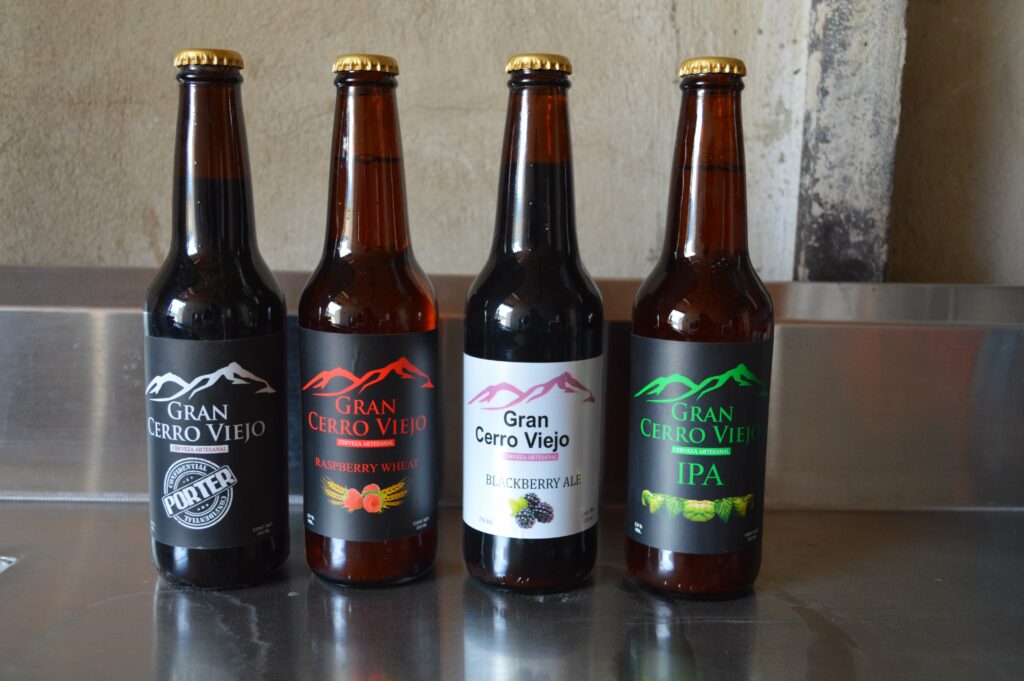
With a doubt, modern Mexican craft brewing was inspired by that done in the US. Beer cicerone (sommelier) and historian Guillermo Ysusi says Mexico’s craft brewers tasted craft beers north of the border starting in the 1990s and wanted to make it themselves.
Both US and Mexican craft brewing rose due to dissatisfaction with native commercial beers. As a legacy of Prohibition, most commercial US beers were poor quality and very low in alcohol and US beer drinkers were becoming exposed to foreign brands. As soon as it became legal again, home brewing took off, laying the framework for small craft breweries and brewpubs.
Mexico’s history with alcohol restrictions is different. There was never a nationwide prohibition, although there was some influence from US Prohibition in the north of the country. There has never been the absolute moral repudiation of “the demon spirit” and even when manufacture and consumption were restricted or prohibited, enforcement was another thing entirely.
Craft brew makers and consumers do share a desire for more and stronger flavors. However, most Mexicans are pretty satisfied with their commercial brands, and that is probably the main reason why craft beer began here a bit later.
Nancy Carinas of Catadoras y Cerveceras de México claims the housewives were making beer in their kitchens as early as early as the 1950s, but documentation indicates that this activity started only three decades ago. At the very end of the 20th century, multiple people began homebrewing with supplies brought over the border. However, credit for being the first craft brewery goes to Gustavo Rodriguez’s Cosaco in Mexico City. Rodriguez discovered craft beer in Texas, and in 1995, bought a beer making kit. In 2000, he opened in Cosaco, which remains in business today despite ever-rising competition.
He does not beat out the other pioneers by much. From the late 1990s to early 2000s, craft breweries and brewpubs began to appear in major cities: the Beer Factory in Mexico City in 1997, Sierra Madre and Casta (now Milarca) in Monterrey in 1998, Cucapá in Tijuana in 2001, Minerva in Guadalajara in 2004. These businesses were accompanied with the first beer-making supply store in Mexico City in 2004, and homebrewing classes in various parts of the country.
The real boom in craft beer production in Mexico began in 2013. In 2012, Minerva won a court case against the major breweries who forbade by contract the selling of competitors’ products in retail outlets as a condition of carrying popular brands. Then the practice was banned by the Comisión Federal de Competencia Económica (Federal Commission of Economic Competition or Cofece). This, says Minerva founder Jesús Briseño, allowed a “boom in craft beer.”
Craft beer production today in Mexico
Today, craft beer can be found in every state in Mexico, and the industry is developed enough to have several associations on the national level. The largest of these is the Unión Cervecera Independiente (UCI, formerly ACERMEX), which works to promote the industry’s interests politically and economically. There are no government statistics related to craft beer in particular, and keeping track of this still highly-fluctuating industry means that most that do exist are educated guesses.
UCI notes that production has risen from 11,943 hectoliters (about 315.5k gallons) in 2017 to 336,016 (about 8.8m gallons) in 2022, and 12% of that growth occurred in 2022, as the industry recovered from the pandemic. These numbers pale to the 135 million hectoliters (3.6 billion gallons) of Mexican commercial beer, with craft beer having only .22% of the total Mexican beer market. The number of craft breweries is really unknown with estimates ranging anywhere from 950 to 1,500. One problem is that almost all craft brewers start out in their home and even after they begin to sell, the business can remain informally there. Likewise, there are no reliable figures as to how many are employed in the industry and how much it is worth.
The increase in both quality and quality means that Mexican brews now give those made in the US a run for their money. Only 20 years ago, there were far fewer varieties, with a preference towards sweeter beers, but today both brewers and drinkers have become more sophisticated, meaning that just about every major variety of European brew is represented. Today, according to UCI, about 5% of production is now exported with brands like Colima, Minerva, Ocho Reales, Rrëy, Loba, Hercules and Monstruo de Agua now available in the U.S.
The growth is reflected in the number and size of craft beer events now found in most parts of the country. They include the Ensenada Beer Fest and the Tijuana Expo Cerveza Artesanal in Baja, the Festival de la Cerveza in Monterrey, Festival de la Cerveza and Cervefest Xochimilco in Mexico City and the Gastro Cervecero Michoacán.
The largest of this is Expo Cerveza, with editions in Guadalajara and Mexico City. It brings together professional brewers from all over the country to exhibit and compete, as well as vendors of equipment and other supplies as well as other kinds of experts that give presentations and workshops on topics important to the industry. One homebrewer I interviewed at the Mexico City event last October likened attendance for someone like him as akin to a chance to go to Disneyland.
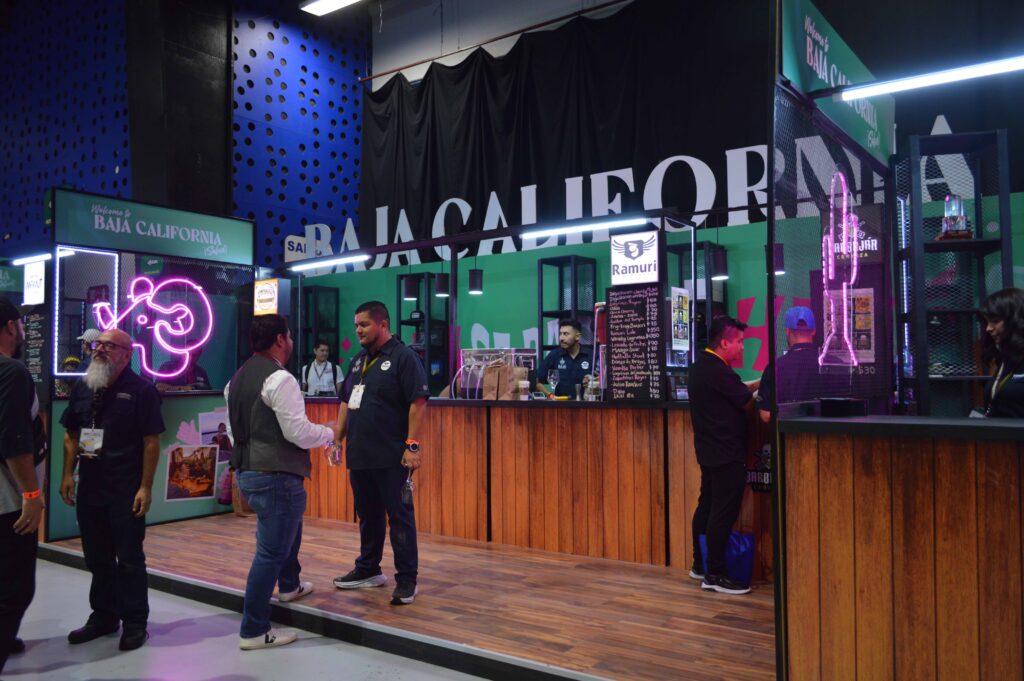

Craft beer’s growth and local sourcing ethic means that entrepreneurship is not just limited to making beer. It now includes one stop shopping suppliers such as Haz Chela and importers like Fermentando.com but one “holy grail” of Mexican craft brewers is to make beers made 100% from domestically-produced hops, yeasts and malt. Central Altiplano is particularly interested in getting Puebla farmers to produce the barley that becomes malt as the first independent malt producer in Mexico, according to Forbes.
More than half of Mexico’s craft beer is produced in the north, although the center has a respectable showing and the industry is growing in the south. However, there are three particularly important areas for craft beer culture.
Baja California
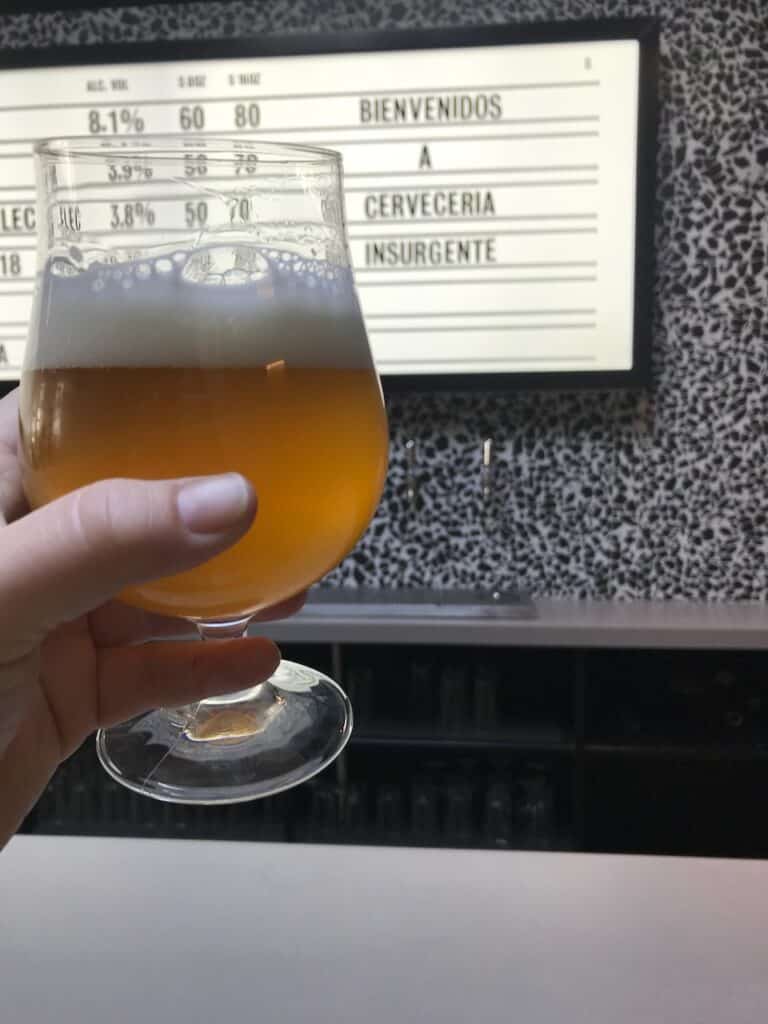
Baja’s craft beer scene started a little later than in other parts of Mexico, but it has since raced ahead, thanks in part to northern Baja’s strong socio economic connections to the US. In addition, it has been able to piggy-back onto the world class wine industry, the growing culinary reputation associated with it, and of course, tourism.
Today, craft beer production can be found up and down the peninsula, but it is most important in the northern cities of Tijuana, Ensenada, Mexicali and Tecate.
For Tijuana, craft beer has been particularly important as it is a little further away from the vineyards then Ensenada, plus it is slowly overcoming a long-standing negative reputation. Home of one of the world’s business border crossings, it has strong economic and cultural ties with San Diego, which has a strong craft brew scene. The first craft brews available here were Tijuana (founded in 2000) and Cucapá (2003).
As important as those pioneering brands are, craft beer really took off with the founding of various breweries in the early 2010s, including Wendlant (2012), Mamut (2012), Border Psycho (2012), Insurgente (2014) and Lúdica (2014).
Perhaps the most prestigious of these is Cervecería Wendlandt founded by Eugenio Romero. Bringing his US craft beer experience across the border, Wendlandt has since become one of the most recognized and influential brewers in Mexico. After perfecting his version of pale ale at home, he and master brewer Ben Matz opened his establishment in Ensenada, overlooking the ocean with a menu focusing on local foods and traditional brew pub cuisine. From the get-go, his beers were winning awards at the Copa Cerveza México, and by 2022, Wendlant has also been named Best Large Brewery by the same organization.
Cerveceria Insurgente began with brothers Iván and Damian Morales experimenting in their mother’s kitchen. In 2011, they won first place at the Festival de la Cerveza Ensenada and since then have won awards in Baja, nationally and in several countries. They opened in the Zona Rio de Tijuana (financial district) in 2014 They export various of their beers worldwide.
Border Psycho Brewery is in one of the oldest neighborhoods of Tijuana. Founded by Roberto and Javier Albarrán in 2012, their brews are inspired by those of the southwest US. Today, they not only manage the production and sales of their brands but also have various bars and restaurants in the downtown and Playas de Tijuana sections of the city.
Mamut is run by Tijuana natives Juan Jose Quezada and Abraham Rodríguez who since 2016 revamped and expanded both the beer and the company. Today, they have various production and retail establishments in Tijuana but are also expanding into other parts of Mexico, most notably Guadalajara.
Without a doubt, breweries and brewpubs in Tijuana and Ensenada benefit from the tourism and other traffic along the Pacific coast. Tecate and Mexicali may not have that same resources to draw from, but they do have similar connections to the north.
Noted establishments in Mexicali include Amante Brew Tap Room (which now has a branch in Hermosillo, Sonora), Cervecería Urbana Tap Room, Averno Tap Room, and Brew Capital Co. Despite being the origin of the famous Tecate commercial brand, this city has only recently had a craft brew scene but brewers here are already organized as the Asociación de Cerveceros Artesanales de Tecate. Noted establishments here include Cervecería Cosmos, The Wolves Brewing, Lupita Pérez Brewing Co., Cerveza Colibrí, and Cerveza Espectro.
You might think there would be competition and perhaps even animosity with the wine and craft beer industries. They are in close proximity, and tend to market to the same socioeconomic strata. But instead the two seem to be complimentary as wine and craft beer experiences are not exactly interchangeable.
Mexico City
As the capital of the country, with a long history of adapting foodstuffs from other places, as well one of the country’s most-developed gourmet dining scenes, Mexico City remains the largest craft beer market, although not the largest producer.
You can find craft beers from just about anywhere in the country, as well as those that are locally-produced in many upscale bars and restaurants. There are various locations of the El Deposito chain here, along with more local operations like Biergarten Roma.
Mexico City is home to the aforementioned Cosaco. Over 20 years ago, Gustavo González founded the microbrewery, and despite the odds, and ever-growing competition, remains in business to this day. He established the home brewer-to-small business paradigm that the vast majority of aspiring craft beer makers follow. He discovered craft brew on visits to Austin, Texas and eventually bought a beer kit there to bring home. He hasn’t stopped brewing since. Despite his lofty status among those in Mexican craft beer. González remains committed to remain a small, niche operation, in no small part to keep to the experience he was taken in by decades ago.
Although appearing only a short time after Cosaco, The Beer Factory has taken a very different path. The first location was established in an upscale shopping center in the equally upscale Santa Fe section of the city, a location targeting Mexico’s upper classes who know craft beer from visits to the US. Here was my first taste of Mexican craft beer 20 years ago. At the time, I thought it was good but needed time to develop. Since then, The Beer Factory’s beers have indeed developed, winning awards in the 2010s, and have opened several locations in Mexico City.
The fame of these two have not discouraged other brewers in and around the city from trying their luck. One noted brewery is Cerveza Calavera, founded in 2008 by Gilbert Nielson in the suburb of Tlanepantla. He has been a homebrewer for some time but after winning a competition in Denmark, he decided to go professional.
In reality, there are too many in the city to list here but ones that have received Mexican press attention include Cyprez Tap Room, Yeccan Cervecería, and Drunkendog.
Guadalajara/Jalisco
The western state of Jalisco also stands out, with production quantity in this state edging out that of Baja. Most of the brewing is done in the Guadalajara metropolitan area. This city’s importance to brewing is noted by it being one of the two sites of the Expo Cerveza- its version held in the spring, while Mexico City’s is held in the fall.)
One reason for the region’s success is that “tapatios” (Guadalajara/Jalisco natives) prefer local brews, and many of Mexico’s foremost brands like Minerva, Fortuna, Cielito Lindo, Loba, La Blanca and Corazón de Malta are from here.
Guadalajara’s brewing history began with Minerva in 2004, in the suburb of Zapopan. Today, about 20,000 hectoliters (528.3k gallons) are produced under this name, and last year Minerva began to appear on US shelves in New York, Texas, California and Arizona. It is also exported to Australia, Canada, New Zealand and Belgium.
One reason for Minerva’s recent boost is that it was bought out by the Cielito Lindo Group in 2023. The company was founded in 2013, but craft beer operations began in 2020. By 2022, Minerva and other Cielito Lindo beers were available in Mexico City, Los Cabos and Puerto Vallarta, as well as the US, which accounts for over a third of their sales.
Challenges to the industry
Craft beer’s biggest issue in the Mexican market is that of price, as most Mexicans are very cost conscious. Without major complaints about the taste of most commercial brands, (and an odd obsession with Bud Light in some northern states), “…many cannot see a reason to pay 2-6x the price,” says Montiel Hernández of Ayutla Distillery and Brewing. This relegates craft beer to a niche market, and while said market is profitable, it does not have the widespread cultural impact that the commercial brands do.
Craft beer is more expensive here for many of the same reasons it is in the US. Startup costs can be high, and it is more expensive to produce in smaller quantities, and brewers cannot buy in the same bulk. Additionally, taxes affect craft beer disproportionately. Mexico does allow some informal sales of alcoholic beverages, meaning that brewers starting out may be able to sell themselves at venues like fairs without registering their product and paying sales and other taxes. However, once the business outgrows this limited sales model, it is hit not only with 16% value-added tax but also a Special Tax on Production and Services of up to 26.5%. Major brewers have been able to negotiate this second tax as far down as 8%, but craft brewers do not have the same clout.
Despite the gains in reputation and education, many Mexican beer drinkers still believe that craft beers are necessarily bitter and unwilling to try an unfamiliar product on their own. Because of this, and craft beer’s more gourmet reputation, craft beer producers must find venues willing and able to learn to integrate new beers into their offerings, and educate their customers about them. The shortage of such venues means that about 60% of sales are direct from producer to consumer, the Internet being a godsend here with enterprises like Beerhouse and Top Beer major craft brew outlets.
One reason craft beer grew as much as it did in the 2010s is that one of its hurdles, limited access to retail outlets, was done away with. Major drink manufacturers would oblige outlets into “exclusivity contracts” meaning that if they wanted to sell a very popular beverage of any type (like Corona), they could not sell a similar competitors’ product. This ended in 2012 after court and regulatory decisions that found the practice to be monopolistic. Still in effect, however, are the same brewers’ hold on contracts for domestically-produced barley malt and other supplies, which forces craft brewers to import about 85% of their raw materials. Fortunately, this is beginning to change as well. Brewers like Ayutla and Cerveceria Calavera are making deals with local farmers, which can even include hops (only suited for certain microclimates in Mexico).
In the past few years, Mexico’s beverage industry in general has been hit by a glass shortage. Commercial beer producers make steady progress in getting their customers to accept canned versions of their product, but craft beer drinkers often believe that glass is superior both for taste and the drinking experience in general. Here craft brewers are at a disadvantage as the wine industry can often outbid them for what glass is available.
The last, and most important raw material issue is that of water. Over half of Mexico’s craft brews are made in the arid north, where water is always a contested resource. During the severe drought in 2022, Mexican president Andrés Manuel López Obrador declared beer making non-essential and stated it should no longer be an industry in the north, suggesting it shift to the wetter south. However, such a move is not so easy. The south lacks infrastructure that hinders both manufacturing and logistics. And there are also water issues there, as of early 2024, about ¾ of Mexico continues to be in drought.
Even success can cause problems, most notably becoming the target of acquisition. Although only a tiny fraction of the total beer market, craft brews have made enough of an impact to get the attention of the big boys, with Modelo buying Baja pioneer brand Cucapá in 2016 along with Cervercería Tijuana, Bocanegra and Ceverería Mexicana of Mexicali. But acquisition is not limited to the beer duopoly. Cielito Lindo of Guadalajara bought competitor Minerva in 2023. This makes these craft beers more readily available regionally and nationally and even more economical, but it harkens back to the consolidation of Mexico’s old-guard beer brands.
All of these issues means that the majority of craft beer enterprises are small with limited reach (which is not necessarily a bad thing). About a third of craft beer brands are available in five or more states, another third in 2-4 and the rest in only one.
The homebrewing culture
Like in the US, Mexican craft beer began with people trying the brews, then working at home to make their own versions. Such is called homebrewing and as mentioned above, the vast majority of Mexican commercial crafts brew began this way.
Unlike the saturated US market, the Mexican homebrew scene is still vibrant and growing. One reason is that many still see opportunities for small businesses of this type, not to mention that Mexican law on the making and selling of alcohol is a bit more relaxed with alcohol beverage production considered to be “artisanal” (roughly “homemade”- not industrial). This not only allows for people to make and sell out of their homes (as a retailer or a pub), but even as far as selling at local and regional fairs.
“Home brewing” can also extend into some unusual settings. In 2023, students from Universidad Autónoma Agraria Antonio Narro (UAAAN) created their own craft beer called Oro Negro (Black Gold) in Saltillo, Coahuila.
Most homebrewers start off with kits or experimenting from scratch, but there are some classes available, such as those online of the Escuela de Cerveceros established in 2020.
Mexico has an organization specific to homebrewers called the Asociación de Cerveceros Caseros de México (ACCA) founded in 2022, when 11 homebrew clubs from states like Baja California, Nuevo León, Guanajuato, CDMX, Querétaro, Aguascalientes and Tabasco joined together to have a bigger voice in the craft brew world. In 2023, they succeeded in having a space together at the Expo Cerveza in Mexico City, a first. Gustavo Castillo Suárez of Tabasco says that this event is important because it gets their beer tasted by professionals who treat us as equals.”
He adds, “Many of the professionals here began like us – at home. And many of us hope to eventually get to where they are.” To this end participating clubs offer budding brewers training, cooperative purchasing of supplies for better prices and help in marketing. This is particularly important for brewers in the southeast of the country, says Jorge Santanna, also of Tabasco, because “… we do not have the same contact with the United States. For us, an association like this helps remedy this situation.”
Not surprisingly, the largest affiliated homebrew club is in Tijuana, but for small clubs like that in Tabasco, the association allows Mexico’s craft world to know that they exist.
Craft beer is still an urban phenomenon in Mexico, although its popularity is reaching into smaller cities and can be found in just about all states. The most developed cultures are still found in places Baja, Guadalajara, Mexico City and Monterrey, which now have tasting clubs and beer cicerones like Armando Ochoa López and Juan José Gómez of the aforementioned Escuela de Cerveceros. Tijuana and Mexico City have brewery/brew pub tours. In 2023, the commercial beer commerce organization, Cerveceros de México held its first craft brew tasting event called the Club de Catadores in Mexico City featuring 30 beers paired with a variety of gourmet foods.
One interesting organization along these lines is Catadoras y Cerveceras de México, an all-female outfit that focuses on the various aspects, like distribution, assessment and promotion, of the craft beer business, not just production. It began in Ensenada in 2012, with the aim of getting more women involved in the industry. From the beginning, they have been involved in assessing the quality of beers, as well as providing support for women learning the craft.
Craft beer and Mexican identity
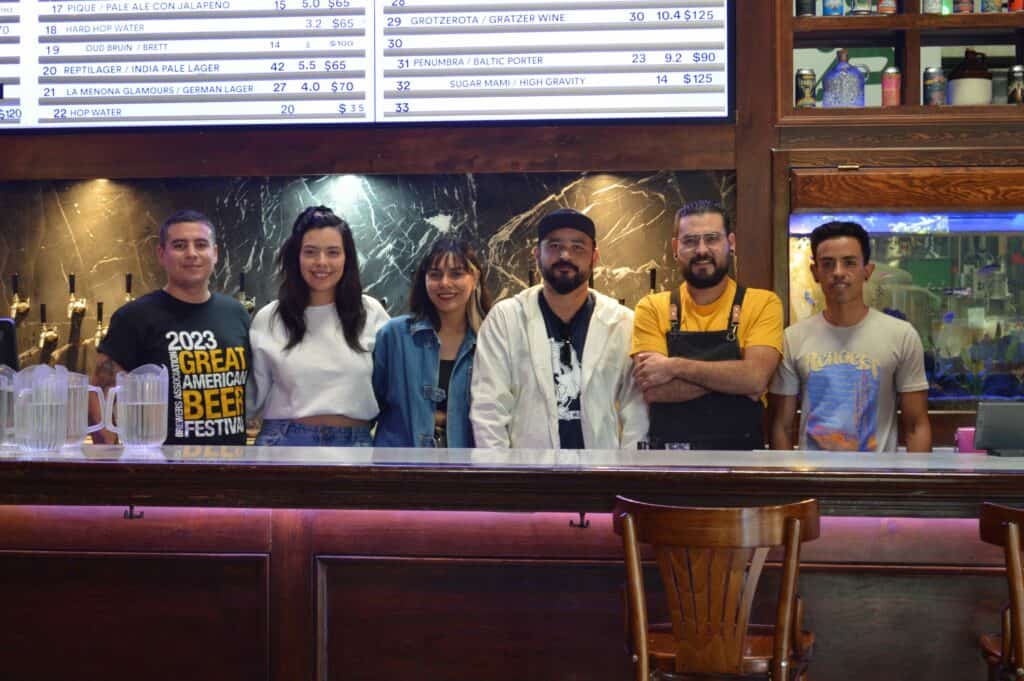
Mexican craft beer drinkers tend to be young and relatively affluent and initially drawn to the beverage either because of its connection to the US and Europe and/or its connection to an affluent Mexican urban center like Guadalajara. Initially, it’s about distinguishing oneself from ordinary beer consumption, but regular drinkers tend to do so for the flavors. That market is now just as sophisticated and demanding as any connoisseur from the United States, a huge change from 20 years ago when few varieties were available and tended to be sweet. The most popular varieties now include pale ale (including IPA), amber, porter, and stout.
Perhaps the most outstanding adaptation from US brewing culture is experimentation with flavoring the various beers. However, rather than imitating the pumpkin spice and banana bread versions found in the US, Mexican brewers focus on flavors that reflect local, regional and national identity. Mexican chocolate, coffee and chili peppers are commonly found in beers from all over Mexico. Also popular are fruits that grow in the area either native or cultivated which include but are not limited to in any way, cactus fruit, berries, mango, guava, and many others. These experiments can get pretty creative and include mole sauce, a bitter herb called damian, tomato and shrimp, Day of the Dead bread, and yes, even grasshoppers and other insects.
Many Mexicans are not happy about the fact that foreign corporations now own over 95% of their traditional beer brands, making craft beer one way to “buy Mexican.” As difficult as it is to do so, the “made-local” ethic of US craft beer is found among Mexican brewers as well, and ecological concerns play a role as well. For brewers like Calavera, the holy grail is to make a 100% Mexican product with all raw materials sources domestically, and for them, even using local energy sources like solar and wind. The “buy local” goal is also important for quality. Eugenio Romero of Wendlant takes pride in the fact that “All the new [craft] beers are made with experimental, fresh, new hops… We take the time to make our own selection: we go to the fields and choose hops year round, it is our definitive ingredient.”
Brew pubs are as much about practical marketing as they are about craft beer culture. Most are located in major cities and major tourist destinations, especially the Pacific coast. Many got their first taste of craft beer in pubs in the US, especially those in the northern states. For Montiel in relatively-isolated southern Puebla, his El Bateador restaurant is his main outlet for his craft beer. The restaurant caters to more affluent travelers on Highway 892 just outside Izucár de Matamoros, as locals cannot pay even the modest 50-peso price for his beer. The restaurant has been successful enough that he has built a number of hotel rooms onto the complex.
While brew pub standbys from the US can be found in their cousins south of the border (especially wings), adaptation of the menu to local foods and tastes is not uncommon. El Gardenia in Chihuahua, is an eclectic mix of international cuisine, but it heavily favors foodstuffs like meats (including sausages) and cheeses that this ranching region is famous for. Baja’s brewery-restaurants (which go by various names), are influenced by the peninsula’s international wine and developing gastronomy based on its seafood. In fact, you might be taken aback by how upscale some of the menus are as these establishments generally do take their decorating cues from the north.
US influence remains important, with brewing organizations and individual brewers maintaining connections with their gringo counterparts in some way. In 2022, women from Mexico and the US joined in Tucson, Arizona to create the Las Hermanas brand, creating a West Coast IPA, the sales of which support efforts to train more women in brewing. Las Hermanas and Unión both believe the continued collaboration is still important to Mexican brewing, which still lags significantly behind, especially in marketing.
Although this is slowly changing, men continue to dominate craft brewing, which might be ironic as most of them started out experimenting in their mothers’ kitchens. Another cross border effort to bring more women into the field is Adelitas Cerveceras Mexicanas in Mexico City
Brewers of various types continue to organize. With 94 members, representing 75% of national production, the Unión Cervecera Independiente is the oldest and largest organization related to craft beer. It is large enough to lobby on behalf of craft brewing and create alliances among government agencies, media, and suppliers. Calavera also supports ejidos, collective farms established after the Mexican Revolution, working with them to grow needed malt, hops and more.
Despite the challenges, the future actually looks bright for Mexican craft brewers. They have natural domestic and international markets especially with Mexicans who travel abroad and Mexico’s huge tourism industry. The “loss” of domestic control of commercial beer brands to foreign entities encourages at least a portion of Mexico’s beer market to look for ways to “buy Mexican,” although cost will keep many in the lower socioeconomic groups loyal to beers produced by the duopoly.
In essence, craft beer in Mexico is a story of Mexicans adopting foreign foodstuff and making it their own. Experimenting with local flavors, processes and how to pair these brews with regional Mexican foods means a whole new world for craft beer lovers to explore.

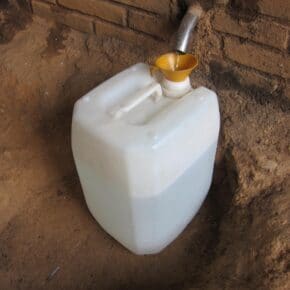
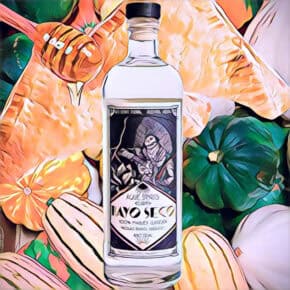









The craft beer scene in Mexico is experiencing significant growth! It combines traditional methods with modern brewing techniques, resulting in a rich and diverse range of flavors.